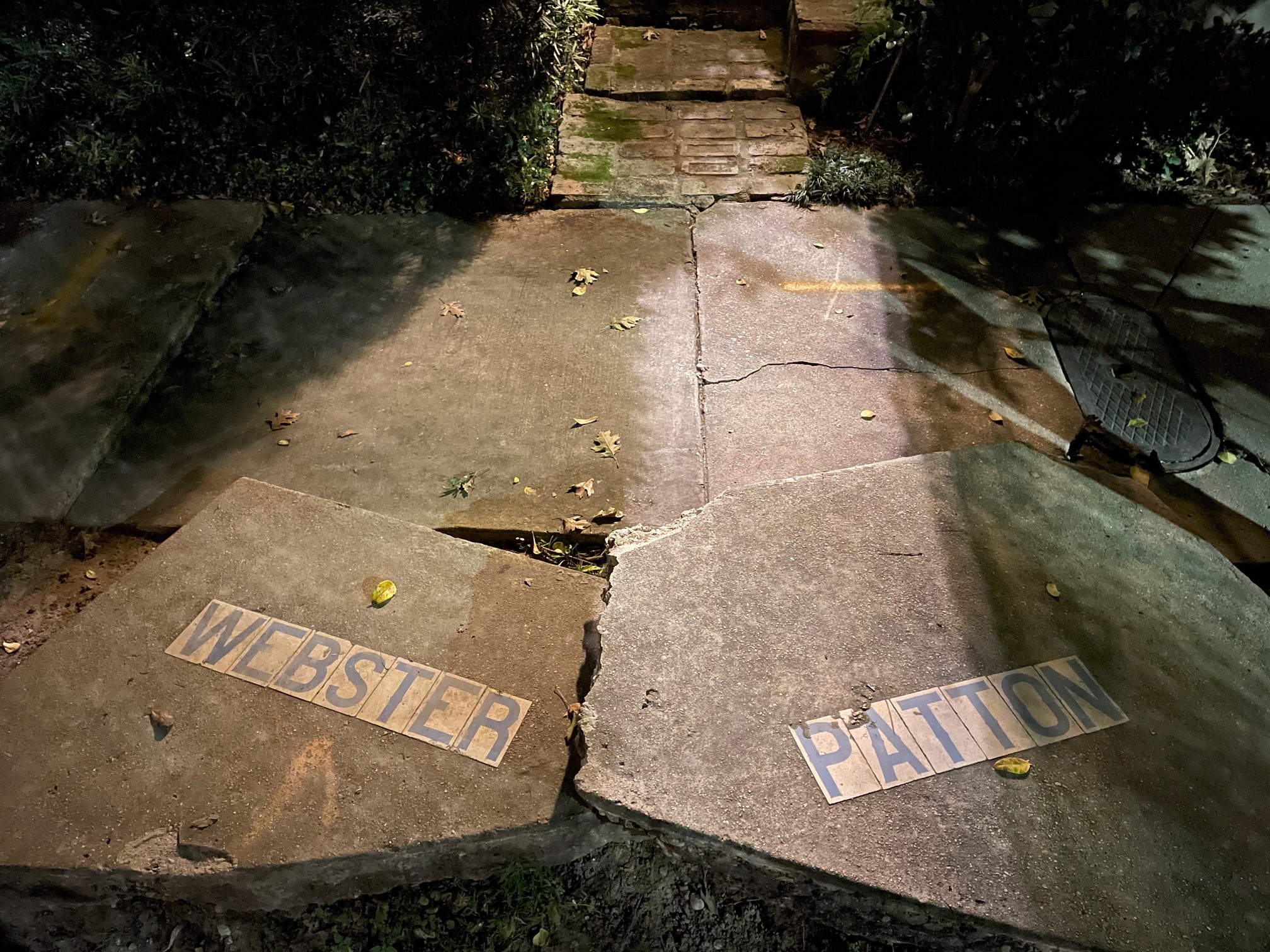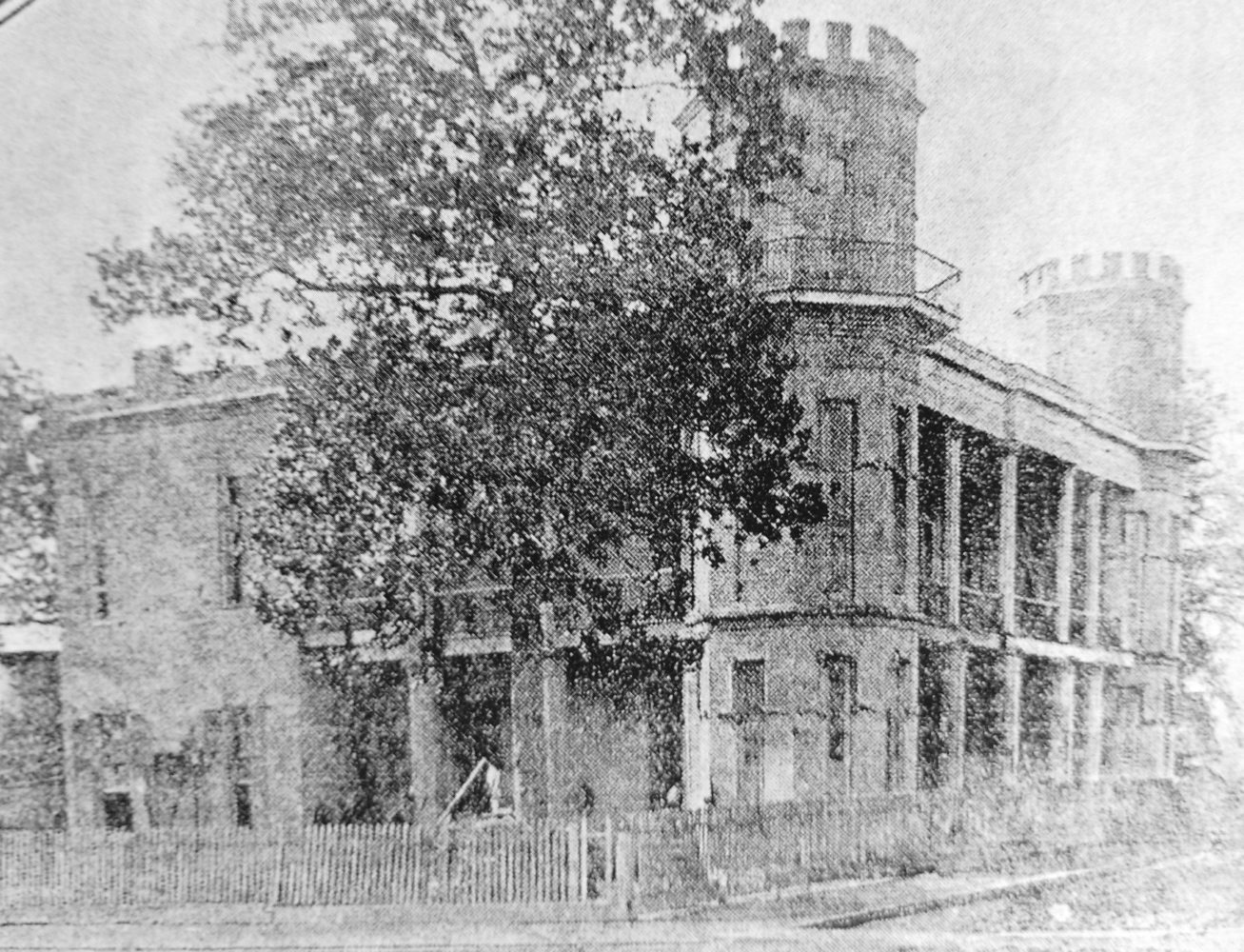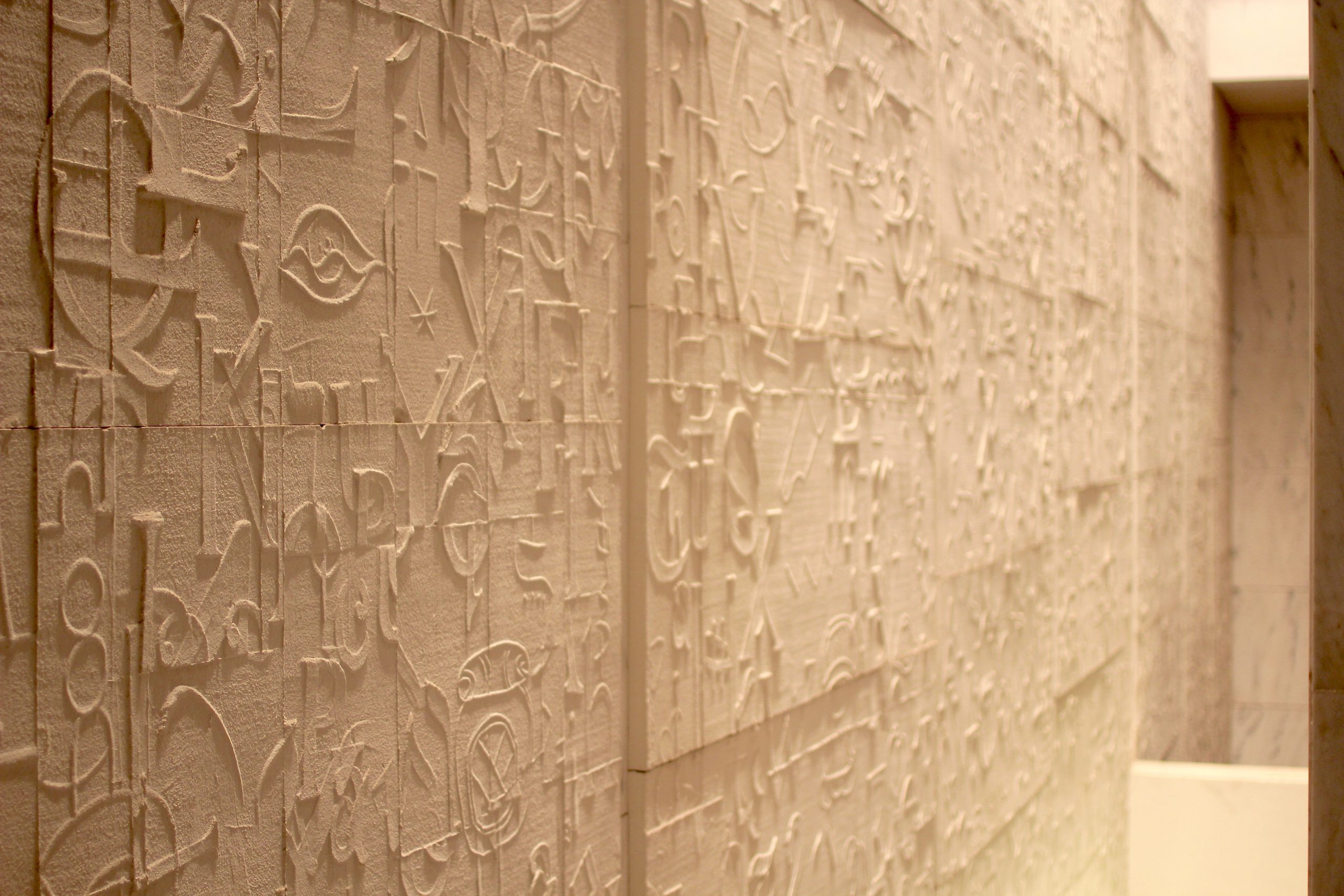This news brief appeared in the December issue of PRC’s Preservation in Print magazine. Interested in getting more preservation stories like this delivered to your door nine times a year? Become a member of the PRC for a subscription!
Drive, bike or stroll the streets of New Orleans, and you’re all but guaranteed to stumble upon a road construction project (not literally, we hope). An estimated 46 percent of city blocks will see some type of repair by 2023.
Many of those streets are not only lined with 19th- and early-20th-century buildings but themselves contain vestiges of the past like granite curbs, cobblestones and brick gutters.
Perhaps the most common, and beloved, of New Orleans historic street features are blue-and-white tiles bearing street names inlaid at many sidewalk intersections.
Readers will be relieved to know that these “character defining features” of New Orleans streetscapes are to remain underfoot. Standard plans given to city contractors call for removing street tiles with an accompanying section of concrete, then reinserting that section when a new sidewalk is poured. In some cases, the tiles may be relocated slightly to accommodate ramps that comply with the Americans with Disabilities Act.
Residents can quite literally provide “eyes on the street” (to borrow a phrase from urbanist Jane Jacobs) by taking stock of historic street features in their neighborhood and monitoring the progress of road work. If you believe a contractor may have wrongly damaged or disposed of street tiles or other historic elements e-mail historicpres@nola.gov or phone Roadwork NOLA at 504.658-ROAD (7623).
The suite of Joint Infrastructure Recovery Roads, or JIRR, projects now underway or in the queue will top $2 billion, with most of that funding coming from the Federal Emergency Management Agency for damage related to Hurricane Katrina. These “joint” road and subsurface repairs involve infrastructure managed by the Department of Public Works (streets, sidewalks and catch basins) as well as the Sewerage and Water Board (water, sewer and large drain lines).
The unprecedented number and size of projects has tested the industry’s ability to complete them amid weather delays and worker shortages. A torrent of public complaints about stalled projects, impassable streets and indifferent workers prompted the city administration to revise its contracting protocols and threaten to end some contracts in August.
Because of the federal government’s role as chief funder, the projects must comply with Section 106 the National Historic Preservation Act. A programmatic agreement among local authorities, FEMA and the Louisiana State Historic Preservation Officer stipulates that historic features be retained or replaced whenever technically feasible. It also provides for streetscape surveys and archaeological investigations; two staff positions were established to carry out this work. Their findings will be published as a historic context statement, typically a small book, on the streetscapes of New Orleans’ National Register of Historic Places districts.
Nathan Lott is PRC’s Policy Research Director and Advocacy Coordinator.






